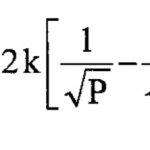- To participate in the 911Metallurgist Forums, be sure to JOIN & LOGIN
- Use Add New Topic to ask a New Question/Discussion about Crushing.
- OR Select a Topic that Interests you.
- Use Add Reply = to Reply/Participate in a Topic/Discussion (most frequent).
Using Add Reply allows you to Attach Images or PDF files and provide a more complete input. - Use Add Comment = to comment on someone else’s Reply in an already active Topic/Discussion.
hammer crusher (4 replies)
I've never seen a power equation for hammer mills, and I suspect some mechanism other than power consumption governs their operation. I don't know that a power efficiency has any meaning for hammer mills.
ACARP sponsored some work directed at building a power model for hammer mills and the comminution of coal. I flag some comments about the models (below in red).
- Shi, F., et al., Impact of Milling Techniques on Coke Oven Feed, ACARP, Project C8057.
https://www.acarp.com.au/abstracts.aspx?repId=C8057
The international export market for Australian coals is dominated by coking coal sales. However, few Australian coking coal producers process their coal domestically to produce direct coke oven feed. Therefore there is little understanding of how best to prepare each coal to achieve optimum coke quality and battery operations at the user end.
Coke quality is controlled by coal properties (rank, ash yield and composition), bulk material properties (size distribution, bulk density and moisture content) and coke oven parameters (oven type, heating rate, coking time, consistency of operation, method of oven loading and quenching). It is also controlled by feed preparation, in particular the best grinding process to achieve an optimum size distribution for coking behaviour.
Currently, coke oven feed is crushed to size specifications of approximately 85% passing 3mm. It is known that some coals require more energy than others to meet this specification, and generally, adjustments to milling configurations are made empirically. The major objective of this project was to develop models for the swing hammer mills under varying machine conditions to assist in the beneficiation of coke oven feeds. It was required that the models be capable of predicting hammer mill products for given feed properties and machine configurations. Alternatively, to achieve a required product from a given feed the models should be able to indicate the machine settings. The outcome of a successful simulation model is the capability to simulate the impact of changing blends or mill configurations to achieve a desired coke oven feed size distribution.
This project combined studies by JKMRC, Callcott Consulting Pty Ltd (CCPL), the CSIRO and BHP Port Kembla Steelworks. The approach of the project was to:
- Conduct an audit on the industrial hammer mill operation at Port Kembla and collect feed samples for the BJD hammer mill tests;
- Characterise the laboratory breakage behaviour of coal using the single particle drop weight test developed at the JKMRC. Tests on coal samples from individual lithotypes and the Port Kembla (PK) hammer mill feed were used to generate the breakage functions for JKMRC modelling;
- Conduct pilot scale hammer mill tests at varying operating conditions;
- Use the data to develop and calibrate hammer mill models for both the pilot scale BJD and the industrial mill at Port Kembla.
Two models were developed and are presented in this report. One uses the JKMRC approach to energy-based mechanistic modelling (Part I), the other the Callcott mathematical model with a fundamental understanding of hammer mill behaviour (Part II). Spreadsheet versions of both models are available from the authors (Frank Shi, JKMRC and Tom Callcott, Callcott Consulting Pty Ltd).
Joan Esterle - phone 07 3327 4411, joan.esterle@csiro.au
Tom Callcott - phone 02 4968 3408, consulting@callcott.com.au
- Shi, F., et al., An energy-based model for swing hammer mills, Int. J. Mineral Processing., vol. 71, 2003, 147-166.
http://www.sciencedirect.com/science/article/pii/S0301751603000358
An energy-based swing hammer mill model has been developed for coke oven feed preparation. It comprises a mechanistic power model to determine the dynamic internal recirculation and a perfect mixing mill model with a dual-classification function to mimic the operations of crusher and screen.
The model parameters were calibrated using a pilot-scale swing hammer mill at various operating conditions. The effects of the underscreen configurations and the feed sizes on hammer mill operations were demonstrated through the fitted model parameters. Relationships between the model parameters and the machine configurations were established. The model was validated using the independent experimental data of single lithotype coal tests with the same BJD pilot-scale hammer mill and full operation audit data of an industrial hammer mill.
The outcome of the energy-based swing hammer mill model is the capability to simulate the impact of changing blends of coal or mill configurations and operating conditions on product size distribution. Alternatively, the model can be used to select the machine settings required to achieve a desired product.
- ACARP, The Hardgrove Grindability Index, ACARP Report, Feb., 1998.
https://www.acarp.com.au/Media/ACARP-WP-5-HardgroveGrindabilityIndex.pdf
This provides some discussion of the various types of mills used for preparation of coal as feed to power generation. It is followed by discussion of available graphics showing the link between HGI and mill capacity for various mill types.


i have some questions about hammer crusher.
for jaw crusher or gyratory crusher, there are spesific formula to calculate crusher power consumption
but for hammer crusher, i can't find any formula
i also want to calculate hammer crusher power efficiency to compare it with actual plant but still confused what to do
it would be nice if someone could help me
and sorry for my bad english